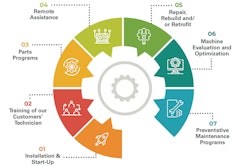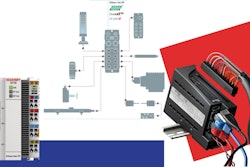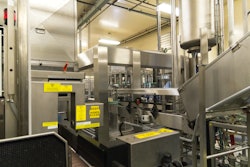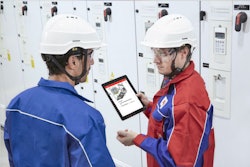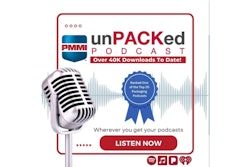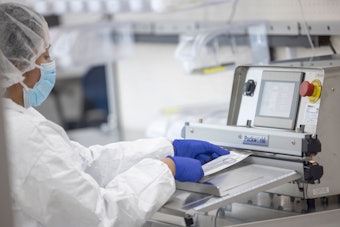This is the third transcript of a three-part series on Automation Trends in Food Processing and Packaging. If you would prefer to watch the video of these discussions, choose link below:
· Robotics video (20 minutes)
· Remote Access video (20 minutes)
· vFAT (Virtual Factory Acceptance Test) video (13 minutes)
David Greenfield:
Let’s move on to one other big area of technology advancement we've been seeing, and that's virtual factory acceptance testing - which essentially is a method to remotely observe, and interact with equipment in operation to ensure that it functions as expected, and to ask questions about it before it even leaves the OEM's factory. And, like the cobots and remote access technologies we've been discussing, virtual factory acceptance testing has been in the news for quite a few years now. But like the others, it seems to have really gotten a boost in interest this past year because of all the social distancing requirements resulting from the pandemic.
Now, Bryan, I know virtual factory acceptance tests are a big area of focus for you and your work with PMMI's OpX Leadership Network. What are you seeing happening here?
Bryan Griffen:
Virtual FATs became a very hot topic this past summer as the industry realized that the COVID pandemic was not going to go away anytime soon. And that meant that projects were going to significantly be impacted and delayed because the CPGs couldn't get to the machine builders to verify the operation of the equipment before it shipped. So, they weren't able to go on site and do those FATs. And so, we started looking around at ‘what solutions do we have,’ ‘what can we do.’ And we started focusing on the virtual factory acceptance test. So, we're being able to do a factory acceptance test from a remote location. That has become such a fundamental now for a lot of the CPGs that we decided to go ahead and create a best practice addendum to our very successful factory acceptance test work product from OpX Leadership Network. So, this new addendum covers the tools and the methods required to be able to effectively execute a FAT without being on site. This includes guidance around the people that should be involved, and when, and how they should be involved, the timing for doing the segments of the factory acceptance testing, because unlike being on site where everybody's touching the machine and involved, we're all now sitting at a computer.
And we all know that we get fatigued from that. And so, having an eight-hour factory acceptance test all online, you're going to lose people. So it suggests ways to break that up, and how to get the people involved, so we make sure that people are engaged in the process as they go. It talks about the type of audio/video equipment, and lighting that we should be using, so that the CPG on the other end of the camera can see down into the machine and understand what's happening in the machine as they do the factory acceptance test. Those types of things ensure that the test can be done in an adequate manner, that the customer, the CPG, is satisfied that the machine is doing what it needs to do and can ship to their facility. Perhaps the most important aspect of performing a virtual FAT though is understanding that there's going to be some differences in the way you did it before. The schedule, the timing, is going to change. For example, we found that a strong pre-FAT is necessary. We need to make sure that everything is ready to go before we get all of these people assembled online, and ready to go.
The suggestion is that the OEM send a video demonstration to the project manager on the CPG side just showing the machine running, just as proof it’s ready, it's running. We can go ahead and do the FAT. Another example of timing changes that come into play is the understanding that some tasks typically performed in an FAT may not be able to be done virtually. For example, center lining a machine, or testing the quality of the bags, or the product coming off the line for leaks, etc. The CPG is not there. They can't do those sorts of things. So, those types of tasks may need to get moved from the FAT over to the site acceptance test, or the SAT. Once the machine is actually installed and running in the end user's, or the customer's site. So, there needs to be a little bit of flexibility in the planning, and in the execution of the FAT from a traditional FAT, but we're finding that it is such a successful operation that many of the CPGs are telling us that even after the pandemic is cleared up, they intend to use virtual FATs for the majority of known equipment.
Known equipment meaning things like check wares, or fillers that they may have three or four already in the factory. So, they know exactly what it's supposed to do. They're not really learning about that piece of equipment going to the FAT. They're just testing to make sure that it actually is running. So, for known equipment they think that they can do that virtually from now on without having the expense of sending a team over to an OEM site just to test that the machine is running. Now, obviously for new equipment that's new to the factory, that's probably not as easy to do as an onsite FAT, but certainly for equipment that we know well, video or virtual FATs is a very effective tool.
David Greenfield:
That's an interesting point. Most of the things that I've heard about virtual FATs have been about new equipment. So, I haven't heard about it for ‘we're getting our third check ware, or fourth, or whatever number check, and we're just verifying that that unit works like our other ones.’ That's an interesting one. I haven't seen too many examples of that, but it makes sense, absolutely. Tom or Glen, anything else to add?
Tom Egan:
We have been doing in-person FATs for 60 years. And in the space of six months due to the pandemic, it upended the whole model, if you will, of the in-person test. I agree with Bryan. I think they're here to stay. It's what we've heard from some of the different consumer package goods executives at production, and engineering, and technical executives we speak with. They also indicate that there are a couple of benefits. And there's one big drawback. One benefit is that they can, meaning the customer group, can sometimes involve an expert that would not otherwise have traveled to a FAT. Because it's a video, Dave, if you're our expert, we can bring you in without the need to have you travel for what the rest of the machine would be an otherwise routine checkout. ‘Here's the fit and finish. Here's the PLC. Here's the emergency stops. We've checked this, this, and this.’ You happen to be an expert in one particular aspect in whatever that machine was designed to do, and perhaps you would not have been on the on-site team at the FAT.
Now though, with a virtual factory acceptance test, we can bring you in. I agree with Bryan's comment that it is still very, very difficult to be able to check out what the finished package is. So, you've got to ship those, or you need someone, perhaps one person, that you're authorizing to be able to check them. But that's still a difficulty. The one thing I think we're missing on right now, and it's more of my observation from some previous FATs is that ‘champion’ aspect. Often when you get involved in an in-person factory acceptance test, you know one of the lead production operators, or lead mechanics, is really going to be the champion at the plant. It's their machine, and they want to be able to really embrace all the capabilities of the machine. On a virtual FAT, that interaction between the OEMs, production team, and technical team, and perhaps that up and coming, or that champion that identifies as, "Hey, this is going on my line, and I want to make sure it works well," I don't know that we've figured that part out yet.
So, that may be one of those aspects that Bryan mentioned gets moved to where it's now during the installation process that that needs to be identified.
Glen Long:
I think there are two things that pop up with this. One is, I think this technology has a tendency to be more or less effective depending upon the complication level of the equipment. Some of the smaller equipment, some of the less sophisticated equipment, it's very easy to do this way, and you can see what you need to see, and have a reasonable facsimile of an in-person FAT. For very large, very complex pieces of equipment, it's much more difficult. And it requires multiple cameras. It requires multiple people on what I'll call the production side, just people running the camera equipment, and making sure the lighting's right, and making sure all that's working let alone the team that's trying to operate the equipment, and there has to be an interactive component. There are people at the CPG remotely asking questions and wanting to interact with what's going on during the testing. So, you've got now multiple groups of people that have to be involved in a really successful FAT, and that escalates depending upon the sophistication level of the equipment.
The other thing that Tom touched on a little bit is in my experience a lot of times in an FAT, the CPG would send teams of people in, and a number of those people were actually the operator, not the maintenance people that were going to be charged with operating that equipment on site. So, in a virtual world, they may or may not get, or they definitely don't get, the hands-on opportunity to try to operate the equipment themselves. They get shown what to do, and then there's an element in-person of, "Hey, let's let you try it." And they don't get that. So, that's either got to be done on the other end, and there has to be time built in to do that, or there's got to be a different way to deliver that kind of training. So, I think it's made tremendous strides out of necessity over the last nine months or so, and as Tom suggested, I don't think it's ever going to go away now. I think it's part and parcel of everything that's going to go on forward, and you'll see some kind of a hybrid.
So, you'll probably see FATs being done virtually. And then some other element of it being done when the machine is delivered. So, it's an interesting part of our world has changed dramatically in a short period of time. It'll be interesting to see where it bottoms out.
David Greenfield:
I think that if there's one connective tissue to our discussion here today, it's been what's happened in the past year. To your point, with everything we've talked about from remote access, to robots, to virtual factory acceptance test, that's been the connective tissue, the pandemic...it didn't create any of these technologies. Like you said, they've all been around for years and years, but it definitely changed how the industry as a whole looked at, and considered, and has adopted these technologies, and changed things very, very quickly in an industry where things tend to evolve much more slowly, historically anyway.
If you've enjoyed our discussion here today, we encourage you to keep an eye on the Processing Zone, which is returning to PACK EXPO Las Vegas taking place September 27th through 29th of this year.
If you're a food and beverage or consumer package goods manufacturer, this is the spot to watch for information on advances in front of line systems, such as for homogenizing, mixing and blending, forming and sizing, and then coding. And for those involved in processing technologies, the Processing Zone is a great place to keep up with advances here.
Looking for reports mentioned in this discussion?
To learn more about OpX vFAT, click here.
Want to read the first transcript on robotics? Click here.
Want to read the second transcript on remote access? Click here.



